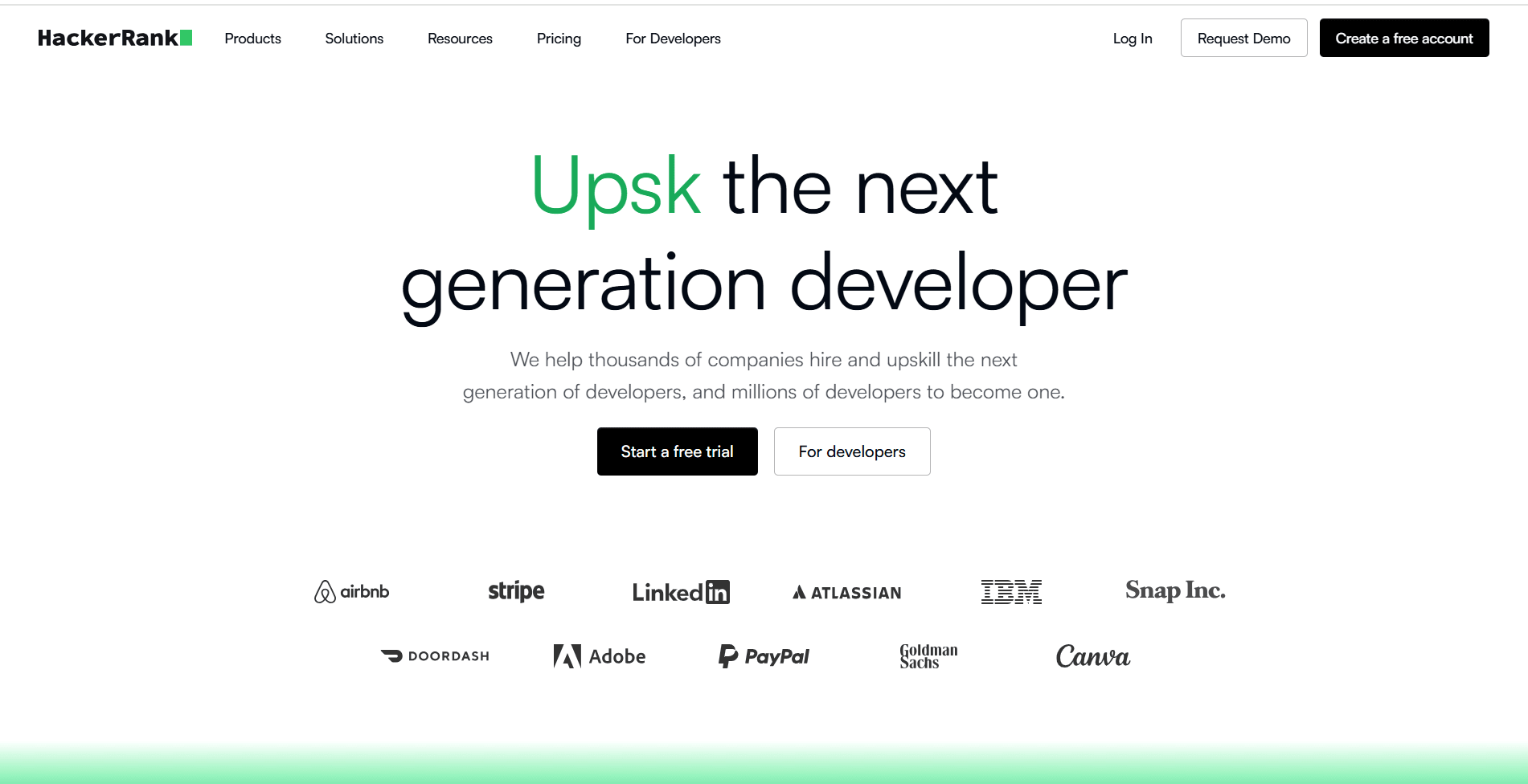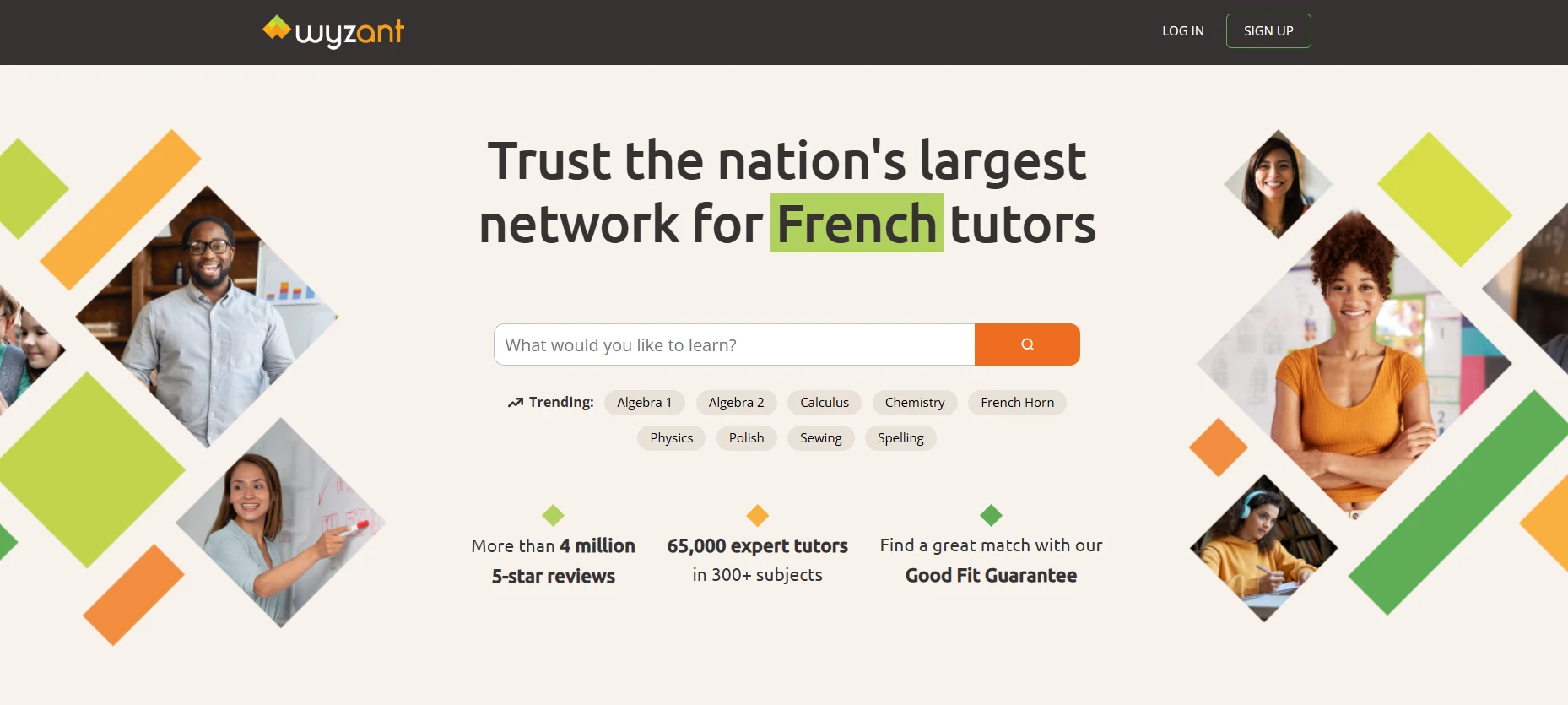HackerRank is a platform widely used for coding practice and technical interviews. In this article, we analyze HackerRank to help students and parents compare it with other tutoring options. We look at reviews, pricing, and services so readers can make informed choices.

HackerRank Reviews and Testimonials
G2 (Developer Skills Platform): HackerRank’s Developer Skills Platform has 509 reviews with an average 4.5/5 rating. Users praise its large problem library and realistic coding environment. Recruiters find it effective for filtering candidates – one noted it helped “narrow down 400 applicants to 30 qualified candidates”. Common complaints include overly strict test grading and outdated or unclear tasks.
G2 (HackerRank for Developers): The HackerRank for Developers profile shows 455 reviews, averaging 4.7/5. This reflects satisfaction with its coding practice and interview prep resources. Most feedback is positive, with very few low ratings.
Trustpilot: The HackerRank Trustpilot page has 13 reviews (avg 2.0/5). Many users (coding test-takers) expressed frustration: they mention outdated or poorly documented challenges, no integrated debugger, hidden test cases, and unresponsive support. One review complained the tasks were “outdated and weird” and the site support was “not good”. These low ratings contrast with the high scores on G2.
Capterra: On Capterra, users rate HackerRank’s value and share detailed pros/cons. One developer praised its “intuitive UI” and live coding feature, and another noted its “large number of tutorials” for learning new languages. The platform is valued for structured practice across beginner to advanced levels. A frequent con was an “outdated compiler” in contests. Overall, most Capterra reviewers gave it 4–5 stars.
HackerRank’s website testimonials: HackerRank does not publish independent user reviews on its site. It highlights client case studies and says thousands of companies use the platform, but it has no section of student or tutor feedback to summarize.
Based on the above, HackerRank is a legitimate, industry-recognized platform. Its high ratings on sites like G2 (4.5–4.7/5) and use by 2,600+ companies show it is widely trusted for coding assessments. However, user reviews also show mixed experiences: technical features like its interview tools are praised, while issues with grading strictness and support have been noted
HackerRank Pricing
Pricing Range
HackerRank’s pricing is subscription-based for companies. The Starter plan is about USD $165 per month ($1,990 billed yearly), and the Pro plan is $375/month ($4,490 annually)}. These tiers include different features (e.g. unlimited users on Pro, AI tools, proctoring). There is also a custom Enterprise tier. Individual developers get free access to practice problems; advanced certification tests and hiring tools require these corporate plans. Check their pricing page for more info.
What students say about HackerRank Pricing
HackerRank’s free developer account means students don’t directly pay for most features. Comments about cost mostly come from businesses. Some startups have found the lowest plans “a bit pricey” for small teams. In general, compared to per-hour tutoring rates ($30–$100/hour), HackerRank’s flat subscription model is for enterprise use and not directly comparable. It seems justified for large hiring teams, but individuals often rely on its free practice instead.

Hidden costs
HackerRank does not charge any signup or hidden fees for basic use. For paid plans, each subscription includes a set number of coding attempts. Unused attempt credits expire (they do not roll over). Additional coding attempts cost $15 each if you need more than the included amount. There are no cancellation penalties; when you cancel, you keep access until the period ends, but no refund is issued for leftover time.
How pricing works
HackerRank offers monthly or annual billing: you can pay month-to-month or get 2 months free with annual payment. Payments are usually by credit card or invoice, and plans auto-renew until canceled. There are no student or income-based discounts listed. The plans cover unlimited users on top tiers. Coupons or special rates are not a common feature, and subscriptions are straightforward.
Free Trial
Yes. HackerRank offers a free trial for its corporate hiring products. You can “start your free trial” without a credit card. (For individual practice, a trial isn’t needed because basic features are already free.)

Refund policy
HackerRank’s policy states there are no refunds for unused time. If you cancel mid-subscription, you still have access until the end of the billing cycle, but no money is returned for the remainder. We found no reports of any exceptions. Users seem to focus on product use rather than refunds. In short, the policy is strict: don’t expect a refund if you stop using paid service early.
HackerRank Alternatives
Students may seek alternatives to HackerRank when they need different services, such as live tutoring or broader study help. Some alternatives focus on coding practice like LeetCode, while others are tutoring platforms like Chegg or Wyzant. We summarize a few key alternatives below.
LeetCode
- Pros: LeetCode is very popular for coding interview prep. It offers thousands of algorithm problems and an active discussion forum where users share solutions and explanations. Many coding interview questions are on LeetCode, and detailed solutions help learning. It has a free version and an optional premium subscription (~$35/month) for extra problems and tools. Its interface and problem quality are highly regarded.
- Cons: LeetCode focuses mostly on programming and algorithm topics (data structures, math, etc.) and does not cover other academic subjects. It has no live tutoring or homework help. Quality of free vs premium can vary, and the difficulty can be high for beginners. It’s purely self-study, so students who need guided help may find it less supportive than a tutoring service.

CodeSignal
- Pros: CodeSignal is another platform for coding skills and assessments. It provides coding tests and interview exercises used by tech hiring. The site has some game-like challenges and a user-friendly interface. For companies and bootcamps, it offers streamlined assessment workflows.
- Cons: CodeSignal’s pricing is not publicly listed, as it is aimed at enterprises. It has fewer publicly available practice problems than HackerRank or LeetCode. It does not offer live tutoring or subject tutoring, and it has less community content. Like HackerRank, it’s not free beyond basic practice.

Chegg
- Pros: Chegg is a broad online learning platform known for homework help and textbook solutions. It has Q&A help in many subjects (math, science, engineering) and 24/7 live tutoring in many topics. It’s easy to access and covers subjects that HackerRank does not (e.g., chemistry, economics). Pricing is subscription-based (~$15/month) plus pay-per-session for tutors. Chegg’s step-by-step solutions can make learning easier.
- Cons: Chegg is not specialized for coding interviews. Its answers and tutoring quality can be mixed since answers come from its community. It’s also known for subscription auto-renew issues. It does not offer coding challenge practice or skill certifications. Compared to HackerRank’s coding focus, Chegg is more about broad homework support.

My Engineering Buddy
- Pros: My Engineering Buddy (MEB) provides live 1:1 tutoring in engineering and math subjects. It excels in complex course help (like thermodynamics, circuits, calculus) that HackerRank does not cover. Tutors are experienced and can guide students through homework problems directly. Students report that MEB is easy to sign up for and that tutors make hard problems understandable. Pricing is pay-as-you-go, which can save money for light use. MEB also offers assignment and project help for engineering courses.
- Cons: MEB has a smaller pool of tutors than large platforms, so matching might take longer. It covers specific technical subjects, so students needing other areas might not find help. It is a paid service, and costs can add up with many sessions. There is no automated problem library – help is only via scheduled sessions.

Wyzant
- Pros: Wyzant is a large marketplace with thousands of tutors in various subjects, including programming. Tutors create detailed profiles and set their own rates. The site handles scheduling and payment. It’s easy to find tutors for nearly any subject and to see ratings from other students.
- Cons: Wyzant tutors can be expensive (commonly $30–$80/hour) since they set their own fees. Quality varies by tutor, so there is risk in picking the wrong one. It is general-purpose and not specialized in coding or engineering. Top experts are available but charge premium rates. There is no money-back guarantee for sessions.

How it Works?
For Students
Students join HackerRank by creating a free developer account. After signing up, they can immediately start solving coding problems or taking practice tests. There is no tutor matching – learning is self-paced. Students can practice by selecting coding challenges or joining contests on demand. They simply log in whenever they want to work, as there is no scheduled timetable for self-study.
For Tutors
HackerRank does not offer a way to join as a tutor. There is no tutor signup or listing. Instead, all users sign up as developers (problem solvers). Companies or test administrators create the content (coding challenges) on HackerRank. So an aspiring tutor would instead create an account as a developer. There is no pay-per-session or tutor fee – the platform is for practice and hiring, not for earning money by tutoring. For reference, see HackerRank’s sign-up page.
FAQs about HackerRank
How does HackerRank compare to My Engineering Buddy?
HackerRank is an automated coding assessment platform, while My Engineering Buddy is a live tutoring service. HackerRank provides online coding challenges and interview practice. MEB connects students with human tutors for personalized help. They target different goals: HackerRank is for skill testing, MEB is for guided learning in specific courses.
Is HackerRank free to use?
Yes for learners. You can create a free developer account on HackerRank and solve coding problems without paying. Paid plans are only for companies that need hiring tools. Students and job-seekers can practice on HackerRank at no cost.
How do I sign up on HackerRank?
To get started, go to HackerRank.com and click “Create a Free Account”. You can sign up with email, Google, or GitHub. After registering, you join millions of developers and can begin practicing or taking skill tests.
Does HackerRank offer certifications?
Yes. HackerRank has certification tests for programming skills. Users can take standardized skill assessments (for example, in Java or Python) and earn a HackerRank certificate upon passing. These certificates appear on your HackerRank profile and help demonstrate skills to employers.
Can HackerRank help with job interviews?
Absolutely. Many tech companies use HackerRank to screen candidates. Students use it to simulate technical interviews by solving similar problems. The platform also includes an AI mock interviewer to practice asking coding questions and get instant feedback. So it is a popular tool for interview preparation.

What subjects does HackerRank cover?
HackerRank focuses on computer science and programming subjects. You will find questions on algorithms, data structures, and core languages (C++, Java, Python, etc.), as well as databases (SQL) and areas like machine learning or AI. Its challenge library is large, covering many technical roles. It does not cover unrelated subjects like literature or pure sciences.
Conclusion
HackerRank’s strengths are its large user base and advanced features (AI interview tools, a vast challenge library). Its weaknesses include user complaints about strict grading and interface issues. My Engineering Buddy fills a different niche: it offers personalized, subject-focused tutoring with high student satisfaction}. For complex engineering courses and direct homework help, MEB is a strong alternative to HackerRank’s automated coding tests.

